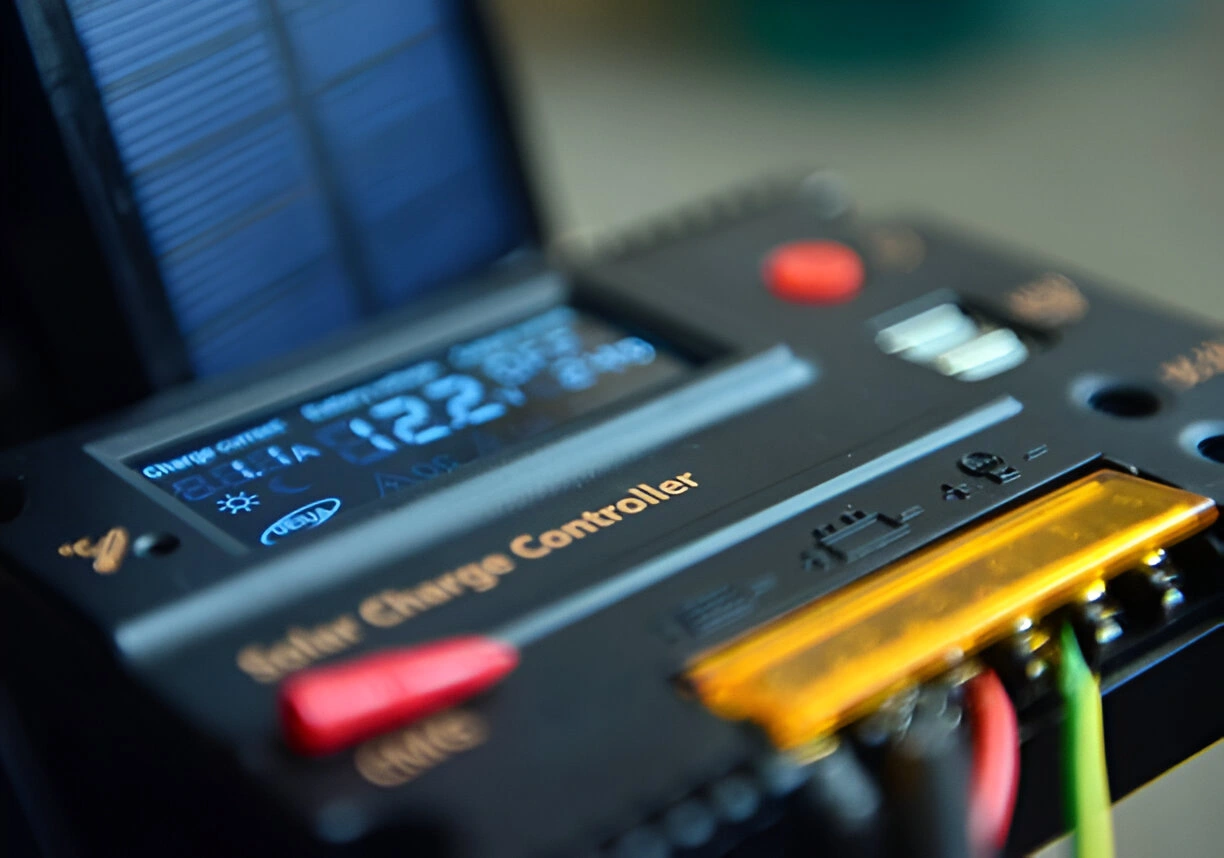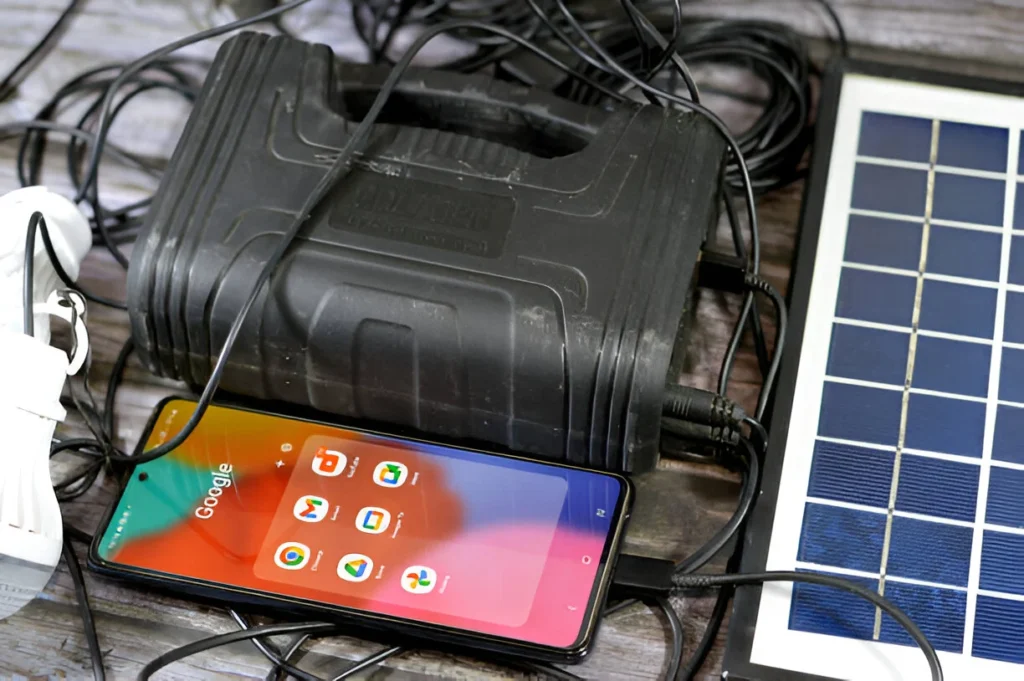With rising energy costs and growing global consciousness, more entrepreneurs and households are turning to alternative sources of power. Few alternatives make more sense than a solar panel and battery kit. Solar panels and battery kits contain everything that you need to capture solar power, store it away, and use it when you want it.
To pay less for electricity, be energy-independent, or make a more sustainable earth, a purchase of a solar panel and battery kit makes good sense. This primer will take you through everything that you need to know so that you might make a good, solid buy with confidence.
Understanding What a Solar Panel and Battery Kit Hold Inside It
The solar panel and battery kit is a combination solution that enables you to conveniently establish and use solar power. Solar panel packages consist of solar panels, inverters, charge handlers, and batteries. Every piece of the tool complements each other to harvest sunlight, convert that sunlight to electricity, store electricity, and provide it for consumption in your office or home.
The panel absorbs solar rays from the sun and produces direct current (DC) electricity. The DC electricity is transmitted to an inverter that converts it to an alternating current (AC), a kind of electricity that is utilized in most domestic appliances. A battery stores more electricity produced within a day for utilization at night or on a cloudy day.
Why a Solar Panel and Battery Kit When Both Could be Bought Apart?
One of the good things about a whole solar panel and battery package kit is that they’re simple. If they’re acquired separately, they might not be compatible. Kits are organized so they’re compatible from out of the package, so they’re simpler to set up and deal with. This is particularly good if one isn’t that technical or if one is a newbie with solar.
Kits also tend to provide technical support in addition to equal warranty on all parts, so that one does not necessarily have to contend with a variety of different manufacturers if an issue does occur. Kits for most individuals also prove more affordable than buying off-the-shelf components.
Types of Solar Panel and Battery Kits
When purchasing a solar panel and battery set kit, one must be choosy with the kind that is appropriate for his or her energy requirement and lifestyle. There are three principal kinds that is, grid-tied, off-grid, and hybrid systems.
Grid-connected systems supply electricity to a utility grid close to you that enables you to take electricity when you require it. Generated power that is more than needed is generally feedable back to the utility grid, lowering your whole electricity bill.
An off-grid system is ideal for off-grid sites that lack access to a power grid. Solar kits for off-grid sites rely strictly on solar power and require significant battery storage so that electricity is readily accessible during nighttime or cloudy weather.
Hybrid systems provide both worlds as they enable you to utilize solar energy if it’s available, while also taking power from the grid if needed. They’re also more flexible than other systems and highly effective for locations with varying supply.

Important Considerations When Making a Purchase
In choosing the appropriate solar panel and battery pack set, some factors must be taken into consideration. Your daily requirement is one of them. Estimate how much power you utilize a day so that you will also be familiar with what size system you need.
Then make an estimate of solar potential for your region. Those locations with more year-round exposure to the sun will produce more electricity for a given set of panels. Solar maps or software from agencies like the National Renewable Energy Laboratory allow you to make estimates of production potential.
Another consideration that has to be made is battery capacity. The battery has to be large enough to store enough power for your nighttime and emergency needs. DoD (depth of discharge), cycle life, and warranty need to be considered when calculating battery options.
The quality and efficiency of a panel also play a role. Choose more efficiency-rated panels that generate more electricity from solar energy using less installed area.
Advantages of Buying a Solar Panel and Battery Kit for Investments
One of the most stable arguments for purchasing a solar panel and battery pack package is that electricity costs will be decreased by a significant amount. Once installed, electricity from solar light does not cost a single penny. It will pay for itself with savings either sooner or later.
Another advantage is being energy-independent. You’re not susceptible to energy disruptions or overcoming utility costs now that you’re equipped with an energy battery backup system. You’re now free to take advantage of a stable supply of energy even during a blackout.
It also reduces your carbon footprint. Solar energy is different from fossil fuels in that it does not generate any emissions. Solar energy does not produce any direct emissions, says Wikipedia. It even reduces greenhouse gas production.
More than that, most cities and governments also provide grants, rebates, and tax credits for families to transition to solar power. They more than offset the purchase price of your solar panel and battery pack package, therefore making it more attractive.
Common Mistakes to Avoid while Choosing a Kit
Most people end up getting trapped in a decision of opting for a kit for a nominal fee. While pricing never matters, pricing matters so much. Inexpensive kits might be put together from a low-grade material that wears off soon or rusts under unfavorable conditions.
Another mistake is the underestimation of energy requirements. A kit smaller than necessary does not generate sufficient power to be of much value from solar energy. A set larger than necessary, while unnecessarily raising initial expenditure, does provide a reserve for future demands.
Poor installation is also a concern. While some kits that you install yourself, it is generally a good idea to pay someone to ensure that everything is installed with safety factors being a consideration.
Thirdly, disregarding permission conditions for a place or laws may result in a fine or disconnection of a system. It is also good to discuss with locals before installing your solar panel and battery set.
Pragmatic Principles for Maximum Productivity
To achieve optimum utilization of your solar panel and battery kit set, the solar panel placement location plays a critical role. Panels must be installed at a point that has direct sun exposure for the whole day. Do not shade from a tree branch, a structure, or any other obstacle.
Periodic servicing is also a must. Use a hose to blow off dirt, birds’ droppings, and any other material that tends to shade off the sun. Check battery condition and replace aging parts as needed for continued top-shelf service.
Using energy-saving appliances also allows for additional value of investment from your solar system. Smart thermostats, LED bulbs, and energy-saving refrigerators reduce your total usage of power so that more of it is being produced from your solar installation.
Real-World Application: Family Savings and Return on
Residential consumers realized humongous savings with the adoption of a solar panel and a battery pack. A good example is a consumer whose household’s mean consumption is 900 kWh a month for a sunny location. The consumer saves up to 80% of electricity costs. Over a 20-year duration, it means a saving of a couple of thousand dollars.
From Wikipedia, solar panel costs for American solar power systems decreased considerably in the previous decade, with solar power being introduced to mass markets. When solar panel tax credits as well as rebates that are offered are taken into consideration, payback for most installations occurs between 6 to 8 years.

Sustainability and Long-term Performance
That move to solar power saves you more money; it saves our planet. Each kilowatt-hour of solar power that you consume keeps our environment from fossil fuels that otherwise end up in our skies with resultant pollutants.
Energy storage is one more element of sustainability by further reducing reliance on peaking power from the utility grid, which is all too often generated from fossil sources. With additional technical advancements, batteries become more sustainable as they become more effective.
Utilization of solar panels and battery sets is one way toward a more environmentally sustainable future. When more homes convert, it does make a significant, large-scale global impact. On Wikipedia, improvements in photovoltaic technology make solar panels more effective and more affordable.
Conclusion: Why This Time is Ideal for Making Investments
Swapping out the switch to a solar panel and battery set is more than a trend, a long-term investment for our fiscal future and our collective health. As electricity costs run to grow, power disruptions become easier, and climate concerns attains speed, forever, it has become clearer that it makes sense to go solar.
From saving you on utility bills to securing power stability and paving a path toward a sustainable future, paybacks are too big to be overlooked.


